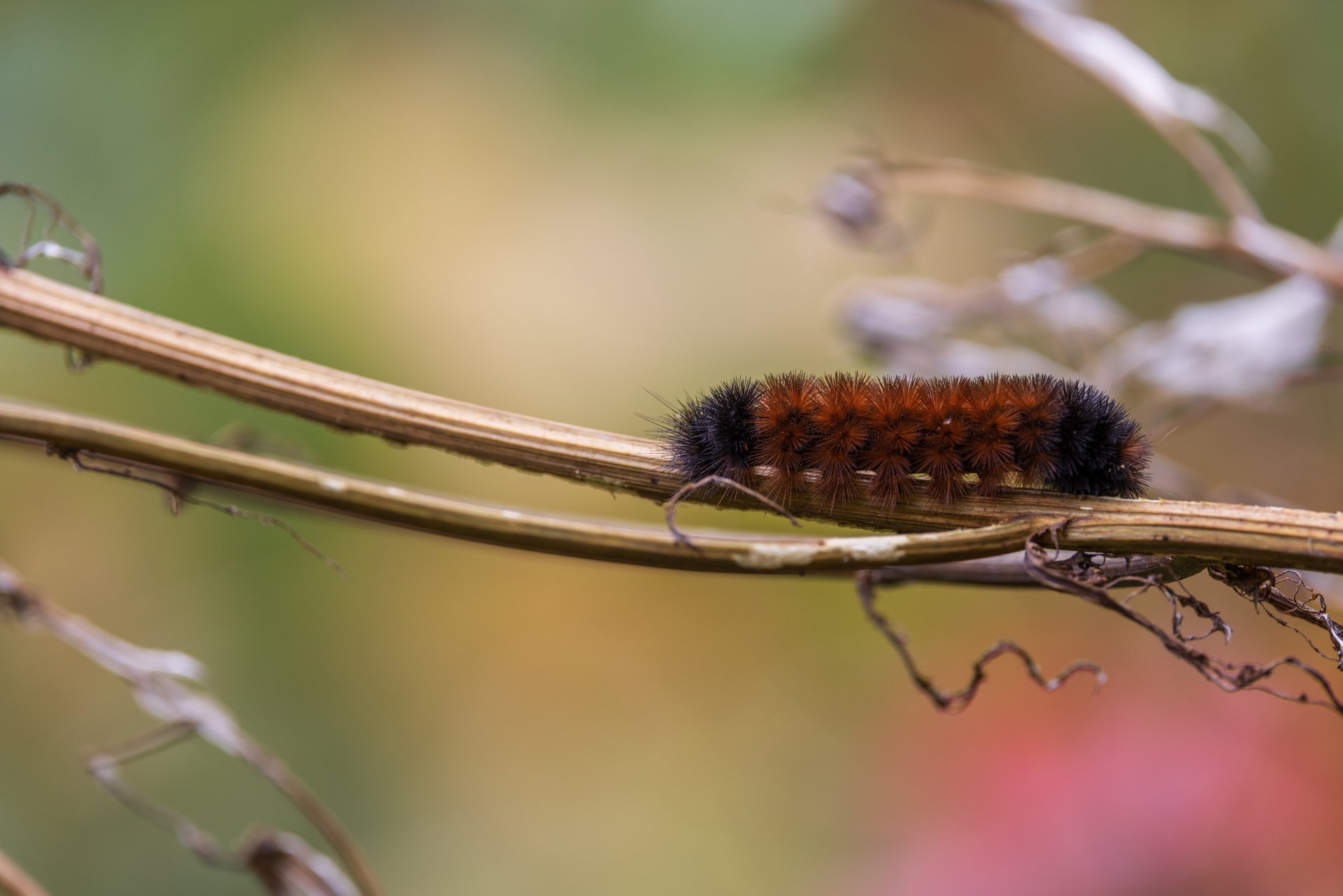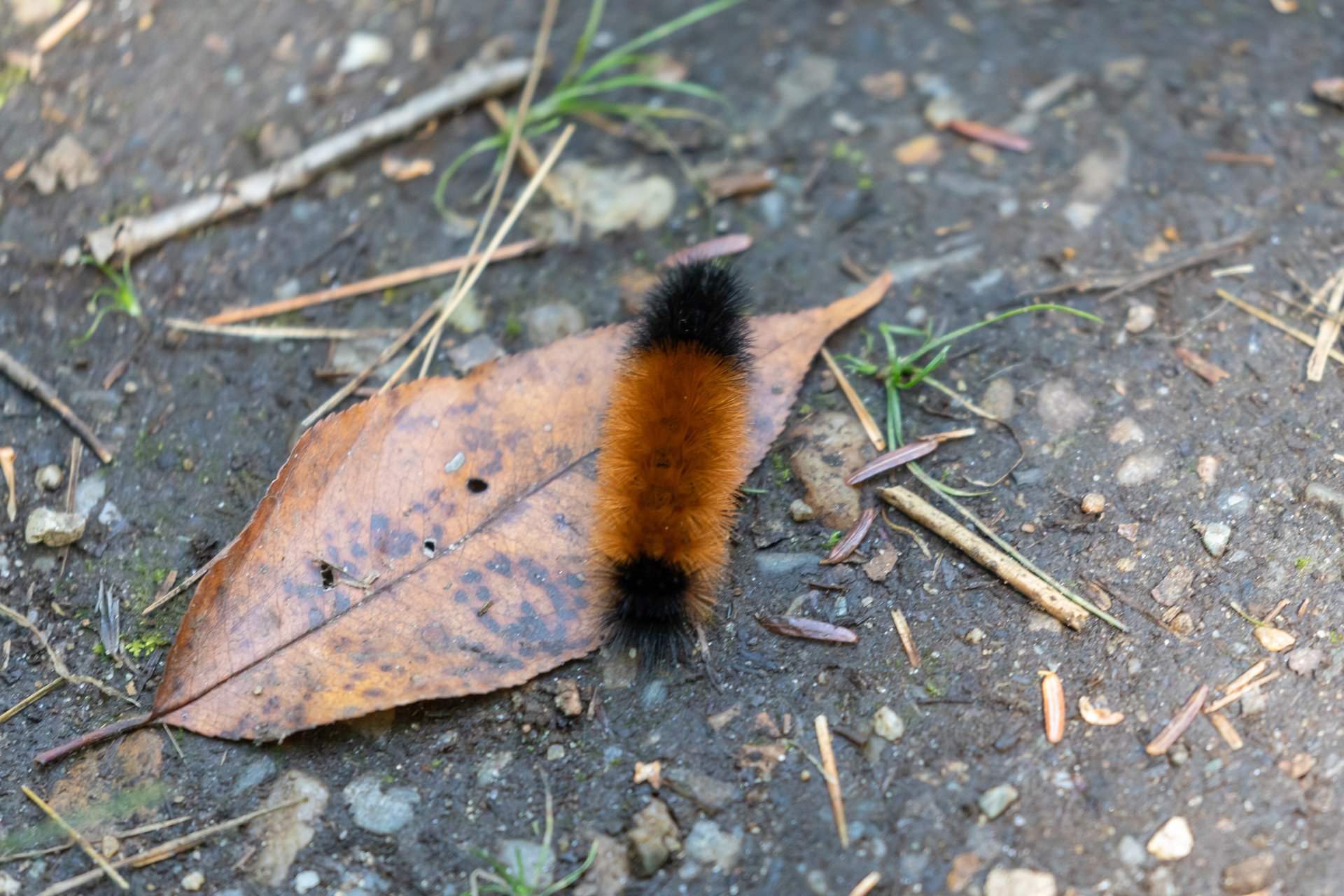Why Did the Woolly Bear Cross the Road?
October 17, 2023
Fall brings with it the familiar and well-loved sight of woolly bear caterpillars crossing roadways and sidewalks. Looking like orange and black-banded bottle brushes, these 1-2 inch caterpillars dodge vehicles and bicycles to get to the other side.
Woolly bears are actually very fast (for a caterpillar, at least). They can travel up to 4 feet per minute, which is roughly equivalent to .05 miles per hour.
With luck and time, these beloved caterpillars will transform into Isabella Tiger Moths, a yellowish-brown moth not nearly as cute as its immature form.
Woollys in Winter
Woolly bears are one of the few caterpillars to overwinter as caterpillars, risking freezing temperatures and predation to emerge in the spring. Quite simply, woolly bears crossing roadways are risking life and legs to find the perfect leaf litter, the perfect board, or the perfect pile of wood chips under which to hibernate. They need a spot sheltered from drying winds, a bit of moisture, and cover from predators.
When they find that spot, they curl up in a tight ball and settle in for a long winter. Their bristle hairs are a deterrent to predators (although raccoons have been observed brushing the hairs off and then eating these insect delicacies). The spiky ball shape makes the caterpillars slippery to predators. If you try to pick up a woolly bear in its hibernating pose, you may find it slips from your grasp.
Hungry Caterpillars Emerge in the Spring
If a woolly bear survives a New England winter, it will emerge in the spring very hungry. At this time of year, you may see caterpillars wandering again as they search for food plants. The caterpillar eats for a short while and then spins a cocoon, made of bristle hairs held together with silk, in a protected spot under rocks or bark. In two weeks, an Isabella Tiger Moth emerges from the cocoon.
The cycle begins again when the female Isabella Tiger Moth lays clusters of eggs on a variety of hostplants. Favorites include dandelion, grass, meadowsweet, nettle, and more. Eggs hatch in 4-5 days, and the young caterpillars feed in groups, becoming solitary as they grow older. Over 3-4 weeks, the caterpillars undergo 6 molts, or skin sheddings. It is the second generation each summer that will crossroads to find that perfect overwintering spot.
Can Woolly Bear Caterpillars Predict the Weather?
Contrary to folklore, the woolly bear is not an accurate weather forecaster. Does the width of its orange band predict the severity of the oncoming winter? No. Instead, each time the caterpillar sheds a skin, its orange band grows a bit larger. So, broader orange bands are most likely an indication of the age of the caterpillar, not of future winter weather.
Next Time You See a Woolly Bear Crossing the Road
So, next time you see a woolly bear caterpillar crossing a road or sidewalk, try to give them some space! Woolly bears are risking life and legs to find the perfect place to cozy up and hibernate, a sentiment we can all relate to.
More on Wildlife in Massachusetts
Discover more about the crawling, flying, and slithering wildlife you can find in Massachusetts by visiting our nature and wildlife hub.
Stay Connected
Don't miss a beat on all the ways you can get outdoors, celebrate nature, and get involved.




